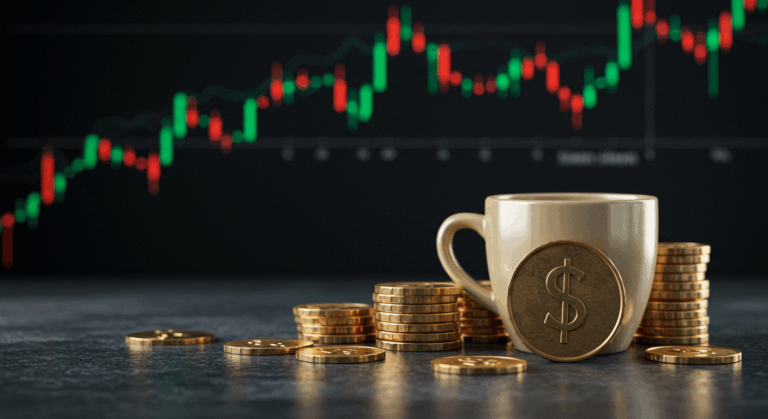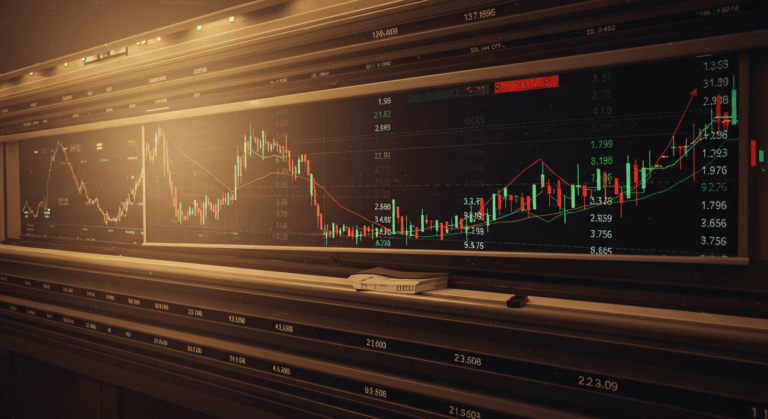Pension Fund: How It Works and How to Choose the Right One
Planning for your financial future can feel overwhelming, but understanding a key tool like the pension fund is the first step toward securing a comfortable retirement. A pension fund is more than just a savings account; it is a powerful investment vehicle designed to grow your money over the long term, ensuring you have a steady stream of income when you stop working. This guide will demystify how these funds operate, explore the different types available, and provide you with a clear framework for choosing the one that best aligns with your personal and financial goals.
Whether you are just starting your career or are looking to optimize your existing retirement strategy, making an informed decision about your pension is one of the most impactful financial choices you can make. Let’s break down everything you need to know to take control of your future.
What Exactly is a Pension Fund?
At its core, a pension fund is a long-term savings and investment plan specifically designed for your retirement. It works by pooling together the regular contributions from many individuals—often you and your employer—and investing that collective capital into a diversified portfolio of assets. These assets typically include a mix of stocks (equities), bonds (fixed-income securities), real estate, and other financial instruments.
The primary objective is to generate growth over several decades. The fund managers, who are financial professionals, make strategic investment decisions on behalf of all the contributors. By spreading the investments across various assets, a strategy known as diversification, they aim to manage risk while maximizing potential returns. The ultimate goal is for your initial contributions to grow substantially, creating a significant pot of money that will support you financially during your retirement years.

How Does a Pension Fund Work? The Mechanics Explained
Understanding the process of a pension fund can be broken down into three main phases: contribution, growth, and payout. Each stage is critical to the success of your retirement planning.
- The Contribution Phase: This is where it all begins. Money is regularly paid into your pension pot. In a workplace pension, these contributions typically come from three sources: your own salary (often deducted before tax, providing immediate tax relief), your employer (many employers match your contributions up to a certain percentage), and tax relief from the government. The consistency and amount of these contributions are the foundation of your future fund.
- The Growth Phase: This is where the magic of compound interest happens. The money in your fund is not sitting idle; it is actively invested. The returns generated by these investments—dividends from stocks, interest from bonds—are automatically reinvested back into the fund. This means your future earnings are generated on both your original contributions and the accumulated earnings. Over a long period, this compounding effect can lead to exponential growth, significantly boosting the final value of your pension.
- The Payout Phase: Once you reach retirement age, you can start accessing your funds. The options available depend on the type of plan and local regulations. Common choices include taking a portion as a tax-free lump sum, purchasing an annuity that provides a guaranteed income for life, or leaving the money invested and drawing down an income as needed (known as drawdown).
Types of Pension Funds to Consider
Not all pension funds are created equal. They vary based on their investment strategy and risk level. Understanding the main types will help you select a fund that matches your personal risk tolerance and retirement timeline. Here are some of the most common categories:
- Equity Funds: These funds primarily invest in stocks. They offer the highest potential for long-term growth but also come with higher volatility and risk. They are generally suitable for younger investors who have a long time horizon to ride out market fluctuations.
- Bond (Fixed-Income) Funds: These funds invest in government and corporate bonds, which are essentially loans that pay a fixed interest rate. They are considered lower risk than equity funds and provide more stable, predictable returns. They are often favored by those approaching retirement who want to preserve their capital.
- Balanced (Hybrid) Funds: As the name suggests, these funds offer a mix of both equities and bonds. They aim to provide a balance between growth and stability, making them a popular middle-ground option for investors with a moderate appetite for risk.
- Target-Date Funds (Lifestyle Funds): This is an increasingly popular, hands-off option. These funds automatically adjust their asset allocation over time. When you are young, the fund is heavily invested in equities for growth. As you get closer to your target retirement date, it gradually shifts toward safer assets like bonds to protect your accumulated wealth.
Key Factors to Consider When Choosing Your Pension Fund
Selecting the right fund requires careful consideration of your unique circumstances. Avoid simply picking the fund with the best recent performance. Instead, evaluate these critical factors to make a well-rounded decision.
- Assess Your Risk Tolerance: How comfortable are you with the value of your investment going up and down? Your age is a big factor; a 25-year-old can afford to take more risks than a 60-year-old. Your financial stability and even your personality play a role. Be honest with yourself about the level of risk you can handle.
- Consider Your Investment Horizon: How many years are there until you plan to retire? A longer horizon means more time for your investments to recover from any market downturns, allowing you to take on more growth-oriented assets. If retirement is just a few years away, capital preservation becomes the priority.
- Analyze Fees and Charges: This is one of the most important yet overlooked factors. All funds charge fees, such as an Annual Management Charge (AMC) or an Ongoing Charges Figure (OCF). While a fraction of a percent may seem small, high fees can significantly erode your returns over decades of investing. Compare the fees of different funds carefully.
- Review Long-Term Performance: Do not be swayed by short-term gains. Look at the fund’s performance over at least five to ten years. Compare its returns against a relevant benchmark index (like the S&P 500 for an equity fund) to see if the fund manager is delivering real value. Past performance is not a guarantee of future results, but it provides valuable context.
- Understand the Investment Strategy: Is the fund actively managed, with a manager trying to beat the market, or is it a passive tracker fund that simply mirrors a market index? Passive funds typically have much lower fees. There are pros and cons to both, so choose one that aligns with your investment philosophy. For more insights on this, you can explore our resources on Investment strategies.
Practical Steps to Get Started
Taking action is the final piece of the puzzle. First, take stock of your current financial situation and define your retirement goals. How much income will you need? Second, research the options available to you through your employer or on the private market. Always read the key information documents provided by the fund. Third, start contributing as early as possible. Even small, regular contributions can grow into a substantial sum over time. Finally, make it a habit to review your pension annually. Life circumstances change, and your investment strategy may need to be adjusted to stay on track. This proactive approach is a cornerstone of smart personal finance.
If you find the options and details overwhelming, do not hesitate to seek professional guidance. A qualified and experienced financial advisor can assess your situation and help you create a personalized retirement plan.
Conclusion
A pension fund is an indispensable tool for building long-term wealth and ensuring financial security in your later years. By understanding how it works, what types are available, and how to evaluate them based on your risk tolerance, time horizon, and associated fees, you can move from being a passive saver to an active and empowered investor. The journey to a comfortable retirement begins with a single, well-informed step. Take the time to choose the right fund today, and your future self will thank you for it.
Frequently Asked Questions (FAQ)
Can I lose money in a pension fund?
Yes, it is possible to lose money. Since a pension fund invests in financial markets, its value will fluctuate. If the market value of the underlying assets (like stocks and bonds) goes down, the value of your pension pot will also decrease. However, pension funds are designed as long-term investments. Over several decades, markets historically trend upwards, and the long time horizon allows your fund to recover from short-term downturns. Furthermore, diversification within the fund helps mitigate risk by spreading investments across different asset classes.
How much should I contribute to my pension fund?
There is no one-size-fits-all answer, as the ideal contribution amount depends on your age, current salary, desired retirement lifestyle, and when you plan to retire. A common rule of thumb is to contribute between 10% and 15% of your pre-tax salary throughout your career. Another simple guideline is to take the age you start saving and halve it—that percentage is what you should aim to contribute. For example, if you start at age 30, you should aim to save 15% of your income. The most important rule is to start as early as possible and contribute as much as you can comfortably afford, especially if your employer offers a matching contribution.
Can I have more than one pension fund?
Yes, it is very common to have multiple pension funds. You will typically start a new pension with each new employer. While you can leave these separate, it can become difficult to track their performance and overall value. Many people choose to consolidate their old pensions into a single plan, either their current workplace pension or a personal one. This can make management easier and potentially reduce the overall fees you are paying. However, before transferring any pension, it is crucial to check for any valuable guarantees or high exit fees you might be giving up.





